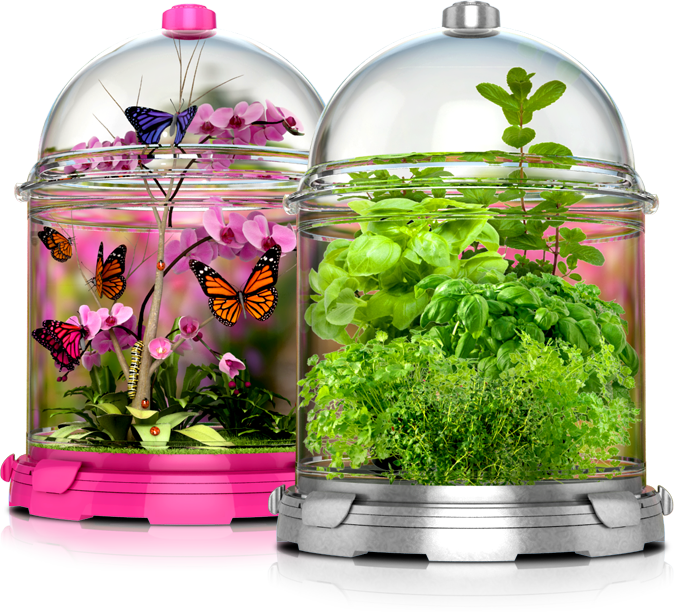A Guide To Raising Butterflies
Share

 There is nothing that captures the imagination like butterflies. They are the original “shape-shifter” which makes them our hero bug. Chances are good that you don’t get to see a lot of them in your neighborhood, but we have a way that can change: Raise your own butterflies.
There is nothing that captures the imagination like butterflies. They are the original “shape-shifter” which makes them our hero bug. Chances are good that you don’t get to see a lot of them in your neighborhood, but we have a way that can change: Raise your own butterflies.
Raising butterflies can be a wonderful way to enjoy nature in your own backyard. But just as with all animals, butterflies (and caterpillars) are delicate creatures that require specific care.
[heading style=”2″ color=”#006633″ style_color=”#006633″]Choosing A Species[/heading]
There are thousands of butterfly species. To begin with, you never want to introduce a species that isn’t native to your area. The best way to find a caterpillar (the earliest stage of a butterfly), is to first look in y our backyard. If you’re not sure which types naturally live in your area, there are many guides (and even a few free apps) that you can use to identify different species. This is part of the fun! Enjoy the process as you learn the names of trees and bushes on your hunt for a caterpillar.
(For a free guide to the most common ones in North America, click here for a download that shows you some of the most common types from Butterflies.org).
[heading style=”2″ color=”#006633″ style_color=”#006633″]Creating A Habitat[/heading]
We like the “ready-made” habitats on the market. While you can theoretically use a bird cage (without the bird!) or an aquarium, we really like the BioBubble to keep butterflies out of harms way. Also, our pets love to watch the caterpillars eat and we want to keep them safe.

[heading style=”2″ color=”#006633″ style_color=”#006633″]Feeding A Caterpillar[/heading]
Once you find a caterpillar, it’s important to feed them the correct plants. The best option is to remove the entire branch of the tree you find your little guy on, then bring them into your BioBubble Habitat (branch and all). You should never try to remove a caterpillar from a tree branch as you can cause injury. If you’re still not sure what your caterpillar wants to eat, here are some ideas:
- Monarch Butterflies only feed on milkweed
- Swallowtails feed on Spice bush
- Tiger Swallowtails prefer Paw-Paw
Now, if you live in a dry environment (like we do), you’ll need to mist the cage each day. This ensures your caterpillar is getting plenty of water. Don’t mist too much or you might create mold, which is toxic to you and your pets.
You’ll need to check your caterpillar each day and be sure you clean up any waste (known as “Frass), as well as any mold growth. It’s important that you don’t try to handle your caterpillar or remove it from whatever they are eating. Some people will place fresh leaves inside the BioBubble but be sure you allow the caterpillar to crawl from leaf to leaf, never try to pick up and remove the caterpillar or you could injure it.
[heading style=”2″ color=”#006633″ style_color=”#006633″]Pupa (or Chyrsalis State)[/heading]
The length of time for a caterpillar to change into a moth or butterfly will vary according to the species. It usually averages between 9 -14 days, which makes this the perfect introduction to pets for children. It’s a wonderful way of introducing children to a low-maintenance pet and see how they do before bringing a dog or cat into the mix. Some species may well take an entire winter to transform, so be sure you do your homework before trying to care for these delicate creatures.
[heading style=”2″ color=”#006633″ style_color=”#006633″]Adult Stage[/heading]
When your butterfly emerges, it is an event bordering on miraculous. This is the key moment you want to share with children as it teaches them about a life cycle. It shows them that beauty changes over time and it teaches them about life.
Your newly emerged butterfly will be very hungry, but will not eat for several hours. It takes time for them to circulate fluid into their wings and let them dry. You’ll need to release your butterfly as soon as it begins to fly. This is very important. It is also why it’s so important to only release your butterfly in summer months. Butterflies are cold blooded, which means they need warmth to survive and they need nectar, which is only available in fresh fruits and flowering plants.
Your butterfly will relax in your yard for a day or so, especially if you provide it with fresh fruit. They also enjoy hummingbird feeders as they feed on nectar.
The life span of a butterfly can vary from a few hours to a few days. Be considerate of this when you give them their freedom. Beauty doesn’t last forever…










